A novel collection of tetracyclic imidazo[4,5-b]pyridine derivatives was designed and synthesized as potential antiproliferative brokers. Their antiproliferative exercise in opposition to human most cancers cells was influenced by the introduction of chosen amino facet chains on the completely different positions on the tetracyclic skeleton and significantly, by the place of N atom within the pyridine nuclei. Thus, the vast majority of compounds confirmed improved exercise compared to commonplace drug etoposide. A number of compounds confirmed pronounced cytostatic impact within the submicromolar vary, particularly on HCT116 and MCF-7 most cancers cells. The obtained outcomes have confirmed the numerous impression of the place of N nitrogen within the pyridine ring on the enhancement of antiproliferative exercise, particularly for derivatives bearing amino facet chains on place 2.
Thus, regioisomers 6, 7 and 9 confirmed noticeable enhancement of exercise compared to their counterparts 10, 11 and 13 with IC50 values in a nanomolar vary of focus (0.3-0.9 μM). Interactions with DNA (together with G-quadruplex construction) and RNA have been influenced by the place of amino facet chains on the tetracyclic core of imidazo[4,5-b]pyridine derivatives and the ligand cost. Average to excessive binding affinities (logKs = 5-7) obtained for chosen imidazo[4,5-b]pyridine derivatives counsel that DNA/RNA are potential cell targets. DNA and RNA have been measured with many methods however typically with comparatively lengthy evaluation instances.
On this examine, we make the most of fast-scan cyclic voltammetry (FSCV) for the subsecond codetection of adenine, guanine, and cytosine, first as free nucleosides, after which inside customized synthesized oligos, plasmid DNA, and RNA from the nematode Caenorhabditis elegans. Earlier research have proven the detection of adenosine and guanosine with FSCV with excessive spatiotemporal decision, whereas we have now prolonged the assay to incorporate cytidine and adenine, guanine, and cytosine in RNA and single- and double-stranded DNA (ssDNA and dSDNA). We discover that FSCV testing has the next sensitivity and yields larger peak oxidative currents when detecting shorter oligonucleotides and ssDNA samples at equal nucleobase concentrations.
That is in keeping with an electrostatic repulsion from negatively charged oxide teams on the floor of the carbon fiber microelectrode (CFME), the damaging holding potential, and the negatively charged phosphate spine. Furthermore, versus dsDNA, ssDNA nucleobases aren’t hydrogen-bonded to 1 one other and thus are free to adsorb onto the floor of the carbon electrode. We additionally reveal that the simultaneous dedication of nucleobases will not be masked even in biologically complicated serum samples. That is the primary report demonstrating that FSCV, when used with CFMEs, is ready to codetect nucleobases when polymerized into DNA or RNA and will doubtlessly pave the way in which for future makes use of in scientific, diagnostic, or analysis purposes.
DNA restore pathway activation options in follicular and papillary thyroid tumors, interrogated utilizing 95 experimental RNA sequencing profiles
DNA restore can forestall mutations and most cancers growth, however it might additionally restore broken tumor cells after chemo and radiation remedy. We carried out RNA sequencing on 95 human pathological thyroid biosamples together with 17 follicular adenomas, 23 follicular cancers, Three medullar cancers, 51 papillary cancers and 1 poorly differentiated most cancers. The gene expression profiles are annotated right here with the scientific and histological diagnoses and, for papillary cancers, with BRAF gene V600E mutation standing.
DNA restore molecular pathway evaluation confirmed strongly upregulated pathway activation ranges for many of the differential pathways within the papillary most cancers and reasonably upregulated sample within the follicular most cancers, when in comparison with the follicular adenomas. This was noticed for the BRCA1, ATM, p53, excision restore, and mismatch restore pathways. This discovering was validated utilizing unbiased thyroid tumor expression dataset PRJEB11591. We additionally analyzed gene expression patterns linked with the radioiodine resistant thyroid tumors (n = 13) and recognized 871 differential genes that in line with Gene Ontology evaluation fashioned two useful teams: (i) response to topologically incorrect protein and (ii) aldo-keto reductase (NADP) exercise.
We additionally discovered RNA sequencing reads for 2 hybrid transcripts: one in-frame fusion for well-known NCOA4-RET translocation, and one other frameshift fusion of ALK oncogene with a brand new companion ARHGAP12. The latter may in all probability assist elevated expression of truncated ALK downstream from 4th exon out of 28. Each fusions have been present in papillary thyroid cancers of follicular histologic subtype with node metastases, certainly one of them (NCOA4-RET) for the radioactive iodine resistant tumor. The variations in DNA restore activation patterns could assist to enhance remedy of various thyroid most cancers varieties underneath investigation and the info communicated could serve for locating further markers of radioiodine resistance.
![Novel amino substituted tetracyclic imidazo[4,5-b]pyridine derivatives: Design, synthesis, antiproliferative activity and DNA/RNA binding study](http://www.gehealthcarecamdengroup.com/wp-content/uploads/2021/04/IMG-20201217-WA0100-484x1024.jpg)
An engineered CRISPR-Cas12a variant and DNA–RNA hybrid guides allow strong and fast COVID-19 testing
Intensive testing is important to interrupt the transmission of SARS-CoV-2, which causes the continued COVID-19 pandemic. Right here, we current a CRISPR-based diagnostic assay that’s strong to viral genome mutations and temperature, produces outcomes quick, could be utilized immediately on nasopharyngeal (NP) specimens with out RNA purification, and incorporates a human inside management throughout the identical response. Particularly, we present that using an engineered AsCas12a enzyme permits detection of wildtype and mutated SARS-CoV-2 and permits us to carry out the detection step with loop-mediated isothermal amplification (LAMP) at 60-65 °C.
 Antibody) Mouse Tissue-type Plasminogen Activator (tPA) Antibody |
|
11632-05011 |
AssayPro |
150 ug |
EUR 175 |
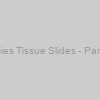 Multiple Species Tissue Slides - Pancreas Tissue |
|
11-100-MSTA |
ProSci |
1 pack |
EUR 241.8 |
|
Description: The Multiple Species Tissue Array (MSTA) slides were designed to study protein expression patterns in different cells and tissues from multiple species. Tissue slices from three different species are mounted on each MSTA slide which can then be treated as a single histological slide for H&E staining, immunohistochemistry, or in situ hybridization. This format allows a rapid analysis of protein expression and localization across different species. MSTA slides can also be used to quickly determine the species reactivity of a given antibody. |
 Eosinophil Major Basic Protein Antibody |
|
10R-E107a |
Fitzgerald |
100 ug |
EUR 620 |
|
|
|
Description: Mouse monoclonal Eosinophil Major Basic Protein Antibody |
 Antibody (Biotin Conjugate)) Mouse Tissue-type Plasminogen Activator (tPA) Antibody (Biotin Conjugate) |
|
11632-05021 |
AssayPro |
150 ug |
EUR 229 |
 human major vault protein,MVP ELISA Kit |
|
201-12-1650 |
SunredBio |
96 tests |
EUR 528 |
|
|
|
Description: A quantitative ELISA kit for measuring Human in samples from biological fluids. |
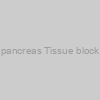 pancreas Tissue block |
|
16 |
BioCoreUSA |
1 unit |
EUR 635 |
 AssayLite™ Antibody (RPE Conjugate)) Mouse Tissue-type Plasminogen Activator (tPA) AssayLite™ Antibody (RPE Conjugate) |
|
11632-05051 |
AssayPro |
5 x 30 ug |
EUR 370 |
 AssayLite™ Antibody (APC Conjugate)) Mouse Tissue-type Plasminogen Activator (tPA) AssayLite™ Antibody (APC Conjugate) |
|
11632-05061 |
AssayPro |
5 x 30 ug |
EUR 370 |
 AssayLite™ Antibody (FITC Conjugate)) Mouse Tissue-type Plasminogen Activator (tPA) AssayLite™ Antibody (FITC Conjugate) |
|
11632-05041 |
AssayPro |
2 x 75 ug |
EUR 370 |
 AssayLite™ Antibody (PerCP Conjugate)) Mouse Tissue-type Plasminogen Activator (tPA) AssayLite™ Antibody (PerCP Conjugate) |
|
11632-05071 |
AssayPro |
5 x 30 ug |
EUR 410 |
) Mixed Titer Bacteria Panel for Platelets (12 Samples 0.1 mL) |
|
0820000 |
Zeptometrix |
- |
EUR 488 |
) Pancreas Tissue Slide (Normal) |
|
11-101-10um |
ProSci |
10 um |
EUR 241.8 |
) Pancreas Tissue Slide (Normal) |
|
11-101-4um |
ProSci |
4 um |
EUR 216.6 |
) Pancreas Tissue Lysate (Tumor) |
|
1737-01 |
ProSci |
0.1 mg |
EUR 336.3 |
|
Description: Pancreas tumor tissue lysate was prepared by homogenization in modified RIPA buffer (150 mM sodium chloride, 50 mM Tris-HCl, pH 7.4, 1 mM ethylenediaminetetraacetic acid, 1 mM phenylmethylsulfonyl fluoride, 1% Triton X-100, 1% sodium deoxycholic acid, 0.1% sodium dodecylsulfate, 5 μg/ml of aprotinin, 5 μg/ml of leupeptin. Tissue and cell debris was removed by centrifugation. Protein concentration was determined with Bio-Rad protein assay. The product was boiled for 5 min in 1 x SDS sample buffer (50 mM Tris-HCl pH 6.8, 12.5% glycerol, 1% sodium dodecylsulfate, 0.01% bromophenol blue) containing 5% β-mercaptoethanol. |
) Pancreas Tissue Lysate (Tumor) |
|
1737-02 |
ProSci |
0.1 mg |
EUR 336.3 |
|
Description: Pancreas tumor tissue lysate was prepared by homogenization in modified RIPA buffer (150 mM sodium chloride, 50 mM Tris-HCl, pH 7.4, 1 mM ethylenediaminetetraacetic acid, 1 mM phenylmethylsulfonyl fluoride, 1% Triton X-100, 1% sodium deoxycholic acid, 0.1% sodium dodecylsulfate, 5 μg/ml of aprotinin, 5 μg/ml of leupeptin. Tissue and cell debris was removed by centrifugation. Protein concentration was determined with Bio-Rad protein assay. The product was boiled for 5 min in 1 x SDS sample buffer (50 mM Tris-HCl pH 6.8, 12.5% glycerol, 1% sodium dodecylsulfate, 0.01% bromophenol blue) containing 5% β-mercaptoethanol. |
) Pancreas Tissue Lysate (Tumor) |
|
1738-01 |
ProSci |
0.1 mg |
EUR 336.3 |
|
Description: Pancreas tumor tissue lysate was prepared by homogenization in modified RIPA buffer (150 mM sodium chloride, 50 mM Tris-HCl, pH 7.4, 1 mM ethylenediaminetetraacetic acid, 1 mM phenylmethylsulfonyl fluoride, 1% Triton X-100, 1% sodium deoxycholic acid, 0.1% sodium dodecylsulfate, 5 μg/ml of aprotinin, 5 μg/ml of leupeptin. Tissue and cell debris was removed by centrifugation. Protein concentration was determined with Bio-Rad protein assay. The product was boiled for 5 min in 1 x SDS sample buffer (50 mM Tris-HCl pH 6.8, 12.5% glycerol, 1% sodium dodecylsulfate, 0.01% bromophenol blue) containing 5% β-mercaptoethanol. |
) Pancreas Tissue Lysate (Normal) |
|
1736-02 |
ProSci |
0.1 mg |
EUR 260.7 |
|
Description: Pancreas tissue lysate was prepared by homogenization in modified RIPA buffer (150 mM sodium chloride, 50 mM Tris-HCl, pH 7.4, 1 mM ethylenediaminetetraacetic acid, 1 mM phenylmethylsulfonyl fluoride, 1% Triton X-100, 1% sodium deoxycholic acid, 0.1% sodium dodecylsulfate, 5 μg/ml of aprotinin, 5 μg/ml of leupeptin. Tissue and cell debris was removed by centrifugation. Protein concentration was determined with Bio-Rad protein assay. The product was boiled for 5 min in 1 x SDS sample buffer (50 mM Tris-HCl pH 6.8, 12.5% glycerol, 1% sodium dodecylsulfate, 0.01% bromophenol blue) containing 5% β-mercaptoethanol. |
) Pancreas Tissue Lysate (Normal) |
|
1736-05 |
ProSci |
0.1 mg |
EUR 260.7 |
|
Description: Pancreas tissue lysate was prepared by homogenization in modified RIPA buffer (150 mM sodium chloride, 50 mM Tris-HCl, pH 7.4, 1 mM ethylenediaminetetraacetic acid, 1 mM phenylmethylsulfonyl fluoride, 1% Triton X-100, 1% sodium deoxycholic acid, 0.1% sodium dodecylsulfate, 5 μg/ml of aprotinin, 5 μg/ml of leupeptin. Tissue and cell debris was removed by centrifugation. Protein concentration was determined with Bio-Rad protein assay. The product was boiled for 5 min in 1 x SDS sample buffer (50 mM Tris-HCl pH 6.8, 12.5% glycerol, 1% sodium dodecylsulfate, 0.01% bromophenol blue) containing 5% β-mercaptoethanol. |
) Pancreas Tissue Slide (Abnormal) |
|
11-106-10um |
ProSci |
10 um |
EUR 241.8 |
) Pancreas Tissue Slide (Abnormal) |
|
11-106-4um |
ProSci |
4 um |
EUR 216.6 |
) Soft Tissue Tissue Slide (Benign) |
|
12-303-10um |
ProSci |
10 um |
EUR 241.8 |
) Soft Tissue Tissue Slide (Benign) |
|
12-303-4um |
ProSci |
4 um |
EUR 216.6 |
) Soft Tissue Tissue Slide (Abnormal) |
|
12-305-10um |
ProSci |
10 um |
EUR 241.8 |
) Soft Tissue Tissue Slide (Abnormal) |
|
12-305-4um |
ProSci |
4 um |
EUR 216.6 |
) Liver Tissue Slide (Necrotic tissue) |
|
10-246-10um |
ProSci |
10 um |
EUR 241.8 |
) Liver Tissue Slide (Necrotic tissue) |
|
10-246-4um |
ProSci |
4 um |
EUR 216.6 |
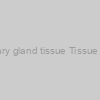 salivary gland tissue Tissue block |
|
107 |
BioCoreUSA |
1 unit |
Ask for price |
 Shaking Bed, 7 Degree, 2-80 RPM, 3 Dimensional with Digital Panel |
|
105005 |
NEST Biotechnology |
1 pcs/cs |
EUR 417.67 |
|
Description: Shaking Bed, 7 Degree, 2-80 RPM, 3 Dimensional with Digital Panel |
 Human major histocompatibility complex ?,MHC?/HLA-? ELISA Kit |
|
201-12-0434 |
SunredBio |
96 tests |
EUR 528 |
|
|
|
Description: A quantitative ELISA kit for measuring Human in samples from biological fluids. |
 Human major histocompatibility complex ?,MHC?/HLA-? ELISA Kit |
|
201-12-0435 |
SunredBio |
96 tests |
EUR 528 |
|
|
|
Description: A quantitative ELISA kit for measuring Human in samples from biological fluids. |
 Human major histocompatibility complex ?,MHC?/HLA? ELISA Kit |
|
201-12-0436 |
SunredBio |
96 tests |
EUR 528 |
|
|
|
Description: A quantitative ELISA kit for measuring Human in samples from biological fluids. |
) Lymphoid Tissue Tissue Slide (Abnormal) |
|
11-504-10um |
ProSci |
10 um |
EUR 241.8 |
) Lymphoid Tissue Tissue Slide (Abnormal) |
|
11-504-4um |
ProSci |
4 um |
EUR 216.6 |
) Pancreas Tissue Slide (Adenocarcinoma) |
|
11-105-10um |
ProSci |
10 um |
EUR 241.8 |
) Pancreas Tissue Slide (Adenocarcinoma) |
|
11-105-4um |
ProSci |
4 um |
EUR 216.6 |
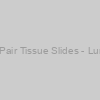 Matched Pair Tissue Slides - Lung Tissue |
|
10-100-MPPT |
ProSci |
1 pack |
EUR 241.8 |
|
Description: The Matched Pair Paraffin Tissue (MPPT) slides are designed for identifying tumor-specific/metastasis genes or proteins. Slices from normal and malignant tissues are mounted on each MPPT slide which can then be treated as a single histological slide for H&E staining, immunohistochemistry, or in situ hybridization. This format allows a rapid analysis of protein expression and localization across normal and cancerous tissue. |
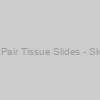 Matched Pair Tissue Slides - Skin Tissue |
|
12-700-MPPT |
ProSci |
1 pack |
EUR 241.8 |
|
Description: The Matched Pair Paraffin Tissue (MPPT) slides are designed for identifying tumor-specific/metastasis genes or proteins. Slices from normal and malignant tissues are mounted on each MPPT slide which can then be treated as a single histological slide for H&E staining, immunohistochemistry, or in situ hybridization. This format allows a rapid analysis of protein expression and localization across normal and cancerous tissue. |
 Human peptide major histocompatibility complex,pMHC ELISA Kit |
|
201-12-0439 |
SunredBio |
96 tests |
EUR 528 |
|
|
|
Description: A quantitative ELISA kit for measuring Human in samples from biological fluids. |
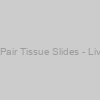 Matched Pair Tissue Slides - Liver Tissue |
|
10-200-MPPT |
ProSci |
1 pack |
EUR 241.8 |
|
Description: The Matched Pair Paraffin Tissue (MPPT) slides are designed for identifying tumor-specific/metastasis genes or proteins. Slices from normal and malignant tissues are mounted on each MPPT slide which can then be treated as a single histological slide for H&E staining, immunohistochemistry, or in situ hybridization. This format allows a rapid analysis of protein expression and localization across normal and cancerous tissue. |
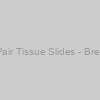 Matched Pair Tissue Slides - Breast Tissue |
|
10-000-MPPT |
ProSci |
1 pack |
EUR 241.8 |
|
Description: The Matched Pair Paraffin Tissue (MPPT) slides are designed for identifying tumor-specific/metastasis genes or proteins. Slices from normal and malignant tissues are mounted on each MPPT slide which can then be treated as a single histological slide for H&E staining, immunohistochemistry, or in situ hybridization. This format allows a rapid analysis of protein expression and localization across normal and cancerous tissue. |
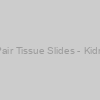 Matched Pair Tissue Slides - Kidney Tissue |
|
10-400-MPPT |
ProSci |
1 pack |
EUR 241.8 |
|
Description: The Matched Pair Paraffin Tissue (MPPT) slides are designed for identifying tumor-specific/metastasis genes or proteins. Slices from normal and malignant tissues are mounted on each MPPT slide which can then be treated as a single histological slide for H&E staining, immunohistochemistry, or in situ hybridization. This format allows a rapid analysis of protein expression and localization across normal and cancerous tissue. |
 Matched Pair Tissue Slides - Spleen Tissue |
|
10-900-MPPT |
ProSci |
1 pack |
EUR 241.8 |
|
Description: The Matched Pair Paraffin Tissue (MPPT) slides are designed for identifying tumor-specific/metastasis genes or proteins. Slices from normal and malignant tissues are mounted on each MPPT slide which can then be treated as a single histological slide for H&E staining, immunohistochemistry, or in situ hybridization. This format allows a rapid analysis of protein expression and localization across normal and cancerous tissue. |
 Matched Pair Tissue Slides - Cervix Tissue |
|
11-300-MPPT |
ProSci |
1 pack |
EUR 241.8 |
|
Description: The Matched Pair Paraffin Tissue (MPPT) slides are designed for identifying tumor-specific/metastasis genes or proteins. Slices from normal and malignant tissues are mounted on each MPPT slide which can then be treated as a single histological slide for H&E staining, immunohistochemistry, or in situ hybridization. This format allows a rapid analysis of protein expression and localization across normal and cancerous tissue. |
 Matched Pair Tissue Slides - Stomach Tissue |
|
10-800-MPPT |
ProSci |
1 pack |
EUR 241.8 |
|
Description: The Matched Pair Paraffin Tissue (MPPT) slides are designed for identifying tumor-specific/metastasis genes or proteins. Slices from normal and malignant tissues are mounted on each MPPT slide which can then be treated as a single histological slide for H&E staining, immunohistochemistry, or in situ hybridization. This format allows a rapid analysis of protein expression and localization across normal and cancerous tissue. |
) Soft Tissue Tissue Slide (Adipose-Normal) |
|
12-311-10um |
ProSci |
10 um |
EUR 241.8 |
) Soft Tissue Tissue Slide (Adipose-Normal) |
|
12-311-4um |
ProSci |
4 um |
EUR 216.6 |
) Soft Tissue Tissue Slide (Adipose-Benign) |
|
12-313-10um |
ProSci |
10 um |
EUR 241.8 |
) Soft Tissue Tissue Slide (Adipose-Benign) |
|
12-313-4um |
ProSci |
4 um |
EUR 216.6 |
) Soft Tissue Tissue Slide (Adipose-Lipoma) |
|
12-314-10um |
ProSci |
10 um |
EUR 241.8 |
) Soft Tissue Tissue Slide (Adipose-Lipoma) |
|
12-314-4um |
ProSci |
4 um |
EUR 216.6 |
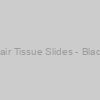 Matched Pair Tissue Slides - Bladder Tissue |
|
12-600-MPPT |
ProSci |
1 pack |
EUR 241.8 |
|
Description: The Matched Pair Paraffin Tissue (MPPT) slides are designed for identifying tumor-specific/metastasis genes or proteins. Slices from normal and malignant tissues are mounted on each MPPT slide which can then be treated as a single histological slide for H&E staining, immunohistochemistry, or in situ hybridization. This format allows a rapid analysis of protein expression and localization across normal and cancerous tissue. |
 Multiple Species Tissue Slides - Lung Tissue |
|
10-100-MSTA |
ProSci |
1 pack |
EUR 241.8 |
|
Description: The Multiple Species Tissue Array (MSTA) slides were designed to study protein expression patterns in different cells and tissues from multiple species. Tissue slices from three different species are mounted on each MSTA slide which can then be treated as a single histological slide for H&E staining, immunohistochemistry, or in situ hybridization. This format allows a rapid analysis of protein expression and localization across different species. MSTA slides can also be used to quickly determine the species reactivity of a given antibody. |
 Multiple Species Tissue Slides - Liver Tissue |
|
10-200-MSTA |
ProSci |
1 pack |
EUR 241.8 |
|
Description: The Multiple Species Tissue Array (MSTA) slides were designed to study protein expression patterns in different cells and tissues from multiple species. Tissue slices from three different species are mounted on each MSTA slide which can then be treated as a single histological slide for H&E staining, immunohistochemistry, or in situ hybridization. This format allows a rapid analysis of protein expression and localization across different species. MSTA slides can also be used to quickly determine the species reactivity of a given antibody. |
 Multiple Species Tissue Slides - Brain Tissue |
|
10-300-MSTA |
ProSci |
1 pack |
EUR 241.8 |
|
Description: The Multiple Species Tissue Array (MSTA) slides were designed to study protein expression patterns in different cells and tissues from multiple species. Tissue slices from three different species are mounted on each MSTA slide which can then be treated as a single histological slide for H&E staining, immunohistochemistry, or in situ hybridization. This format allows a rapid analysis of protein expression and localization across different species. MSTA slides can also be used to quickly determine the species reactivity of a given antibody. |
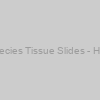 Multiple Species Tissue Slides - Heart Tissue |
|
10-500-MSTA |
ProSci |
1 pack |
EUR 241.8 |
|
Description: The Multiple Species Tissue Array (MSTA) slides were designed to study protein expression patterns in different cells and tissues from multiple species. Tissue slices from three different species are mounted on each MSTA slide which can then be treated as a single histological slide for H&E staining, immunohistochemistry, or in situ hybridization. This format allows a rapid analysis of protein expression and localization across different species. MSTA slides can also be used to quickly determine the species reactivity of a given antibody. |
 Multiple Species Tissue Slides - Colon Tissue |
|
10-700-MSTA |
ProSci |
1 pack |
EUR 241.8 |
|
Description: The Multiple Species Tissue Array (MSTA) slides were designed to study protein expression patterns in different cells and tissues from multiple species. Tissue slices from three different species are mounted on each MSTA slide which can then be treated as a single histological slide for H&E staining, immunohistochemistry, or in situ hybridization. This format allows a rapid analysis of protein expression and localization across different species. MSTA slides can also be used to quickly determine the species reactivity of a given antibody. |
) Soft Tissue Tissue Slide (Adipose-Abnormal) |
|
12-317-10um |
ProSci |
10 um |
EUR 241.8 |
) Soft Tissue Tissue Slide (Adipose-Abnormal) |
|
12-317-4um |
ProSci |
4 um |
EUR 216.6 |
 Multiple Species Tissue Slides - Kidney Tissue |
|
10-400-MSTA |
ProSci |
1 pack |
EUR 241.8 |
|
Description: The Multiple Species Tissue Array (MSTA) slides were designed to study protein expression patterns in different cells and tissues from multiple species. Tissue slices from three different species are mounted on each MSTA slide which can then be treated as a single histological slide for H&E staining, immunohistochemistry, or in situ hybridization. This format allows a rapid analysis of protein expression and localization across different species. MSTA slides can also be used to quickly determine the species reactivity of a given antibody. |
 Matched Pair Tissue Slides - Colorectal Tissue |
|
10-700-MPPT |
ProSci |
1 pack |
EUR 241.8 |
|
Description: The Matched Pair Paraffin Tissue (MPPT) slides are designed for identifying tumor-specific/metastasis genes or proteins. Slices from normal and malignant tissues are mounted on each MPPT slide which can then be treated as a single histological slide for H&E staining, immunohistochemistry, or in situ hybridization. This format allows a rapid analysis of protein expression and localization across normal and cancerous tissue. |
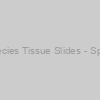 Multiple Species Tissue Slides - Spleen Tissue |
|
10-900-MSTA |
ProSci |
1 pack |
EUR 241.8 |
|
Description: The Multiple Species Tissue Array (MSTA) slides were designed to study protein expression patterns in different cells and tissues from multiple species. Tissue slices from three different species are mounted on each MSTA slide which can then be treated as a single histological slide for H&E staining, immunohistochemistry, or in situ hybridization. This format allows a rapid analysis of protein expression and localization across different species. MSTA slides can also be used to quickly determine the species reactivity of a given antibody. |
 Multiple Species Tissue Slides - Testis Tissue |
|
11-700-MSTA |
ProSci |
1 pack |
EUR 241.8 |
|
Description: The Multiple Species Tissue Array (MSTA) slides were designed to study protein expression patterns in different cells and tissues from multiple species. Tissue slices from three different species are mounted on each MSTA slide which can then be treated as a single histological slide for H&E staining, immunohistochemistry, or in situ hybridization. This format allows a rapid analysis of protein expression and localization across different species. MSTA slides can also be used to quickly determine the species reactivity of a given antibody. |
 Ponceau Total Protein Stain |
|
20-311 |
Genesee Scientific |
500ml/Unit |
EUR 66.44 |
|
Description: Visible, Reversible |
 Multiple Species Tissue Slides - Stomach Tissue |
|
10-800-MSTA |
ProSci |
1 pack |
EUR 241.8 |
|
Description: The Multiple Species Tissue Array (MSTA) slides were designed to study protein expression patterns in different cells and tissues from multiple species. Tissue slices from three different species are mounted on each MSTA slide which can then be treated as a single histological slide for H&E staining, immunohistochemistry, or in situ hybridization. This format allows a rapid analysis of protein expression and localization across different species. MSTA slides can also be used to quickly determine the species reactivity of a given antibody. |
) Soft Tissue Tissue Slide (Adipose-Undiagnosed) |
|
12-310-10um |
ProSci |
10 um |
EUR 241.8 |
) Soft Tissue Tissue Slide (Adipose-Undiagnosed) |
|
12-310-4um |
ProSci |
4 um |
EUR 216.6 |
) Soft Tissue Tissue Slide (Adipose-Liposarcoma) |
|
12-316-10um |
ProSci |
10 um |
EUR 241.8 |
) Soft Tissue Tissue Slide (Adipose-Liposarcoma) |
|
12-316-4um |
ProSci |
4 um |
EUR 216.6 |
) Lymphoid Tissue Tissue Slide (Appendix-Abnormal) |
|
11-515-10um |
ProSci |
10 um |
EUR 241.8 |
) Lymphoid Tissue Tissue Slide (Appendix-Abnormal) |
|
11-515-4um |
ProSci |
4 um |
EUR 216.6 |
) Lymphoid Tissue Tissue Slide (Lymph Node - Normal) |
|
11-521-10um |
ProSci |
10 um |
EUR 241.8 |
) Lymphoid Tissue Tissue Slide (Lymph Node - Normal) |
|
11-521-4um |
ProSci |
4 um |
EUR 216.6 |
) Lymphoid Tissue Tissue Slide (Lymph Node - Benign) |
|
11-523-10um |
ProSci |
10 um |
EUR 241.8 |
) Lymphoid Tissue Tissue Slide (Lymph Node - Benign) |
|
11-523-4um |
ProSci |
4 um |
EUR 216.6 |
) Lymphoid Tissue Tissue Slide (Lymph Node - Abnormal) |
|
11-525-10um |
ProSci |
10 um |
EUR 241.8 |
) Lymphoid Tissue Tissue Slide (Lymph Node - Abnormal) |
|
11-525-4um |
ProSci |
4 um |
EUR 216.6 |
) Lymphoid Tissue Tissue Slide (Lymph Node - Malignant) |
|
11-524-10um |
ProSci |
10 um |
EUR 241.8 |
) Lymphoid Tissue Tissue Slide (Lymph Node - Malignant) |
|
11-524-4um |
ProSci |
4 um |
EUR 216.6 |
 Matched Pair Tissue Slides - Small Intestine Tissue |
|
11-800-MPPT |
ProSci |
1 pack |
EUR 241.8 |
|
Description: The Matched Pair Paraffin Tissue (MPPT) slides are designed for identifying tumor-specific/metastasis genes or proteins. Slices from normal and malignant tissues are mounted on each MPPT slide which can then be treated as a single histological slide for H&E staining, immunohistochemistry, or in situ hybridization. This format allows a rapid analysis of protein expression and localization across normal and cancerous tissue. |
) Soft Tissue Tissue Slide (Skeletal Muscle-Normal) |
|
12-341-10um |
ProSci |
10 um |
EUR 241.8 |
) Soft Tissue Tissue Slide (Skeletal Muscle-Normal) |
|
12-341-4um |
ProSci |
4 um |
EUR 216.6 |
) Soft Tissue Tissue Slide (Skeletal Muscle-Benign) |
|
12-343-10um |
ProSci |
10 um |
EUR 241.8 |
) Soft Tissue Tissue Slide (Skeletal Muscle-Benign) |
|
12-343-4um |
ProSci |
4 um |
EUR 216.6 |
) Soft Tissue Tissue Slide (Skeletal Muscle-malignant) |
|
12-345-10um |
ProSci |
10 um |
EUR 241.8 |
) Soft Tissue Tissue Slide (Skeletal Muscle-malignant) |
|
12-345-4um |
ProSci |
4 um |
EUR 216.6 |
 Human total Procollagen Type I Intact N-terminal Propeptide,total-P1NP ELISA Kit |
|
201-12-2130 |
SunredBio |
96 tests |
EUR 528 |
|
|
|
Description: A quantitative ELISA kit for measuring Human in samples from biological fluids. |
 Multiple Species Tissue Slides - Small Intestine Tissue |
|
11-800-MSTA |
ProSci |
1 pack |
EUR 241.8 |
|
Description: The Multiple Species Tissue Array (MSTA) slides were designed to study protein expression patterns in different cells and tissues from multiple species. Tissue slices from three different species are mounted on each MSTA slide which can then be treated as a single histological slide for H&E staining, immunohistochemistry, or in situ hybridization. This format allows a rapid analysis of protein expression and localization across different species. MSTA slides can also be used to quickly determine the species reactivity of a given antibody. |
 Mycobacterium Tuberculosis major secretory protein Antigen 85B, Recombinant |
|
22061123-1 |
Glycomatrix |
2 µg |
EUR 137.27 |
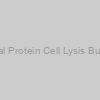 Total Protein Cell Lysis Buffer |
|
22050011-1 |
Glycomatrix |
100 mL |
EUR 84.38 |
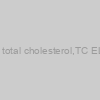 Human total cholesterol,TC ELISA Kit |
|
201-12-1927 |
SunredBio |
96 tests |
EUR 528 |
|
|
|
Description: A quantitative ELISA kit for measuring Human in samples from biological fluids. |
 prostate Tissue block |
|
20 |
BioCoreUSA |
1 unit |
EUR 575 |
 placenta Tissue block |
|
19 |
BioCoreUSA |
1 unit |
EUR 525 |
 pituitary Tissue block |
|
18 |
BioCoreUSA |
1 unit |
EUR 635 |
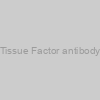 Tissue Factor antibody |
|
20R-1401 |
Fitzgerald |
10 mg |
EUR 306 |
|
|
|
Description: Sheep polyclonal Tissue Factor antibody |
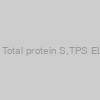 Human Total protein S,TPS ELISA Kit |
|
201-12-1150 |
SunredBio |
96 tests |
EUR 528 |
|
|
|
Description: A quantitative ELISA kit for measuring Human in samples from biological fluids. |
 Human Total bile acide,TBA ELISA Kit |
|
201-12-1382 |
SunredBio |
96 tests |
EUR 528 |
|
|
|
Description: A quantitative ELISA kit for measuring Human in samples from biological fluids. |
 Human total Tau Proteins,t? ELISA kit |
|
201-12-1334 |
SunredBio |
96 tests |
EUR 528 |
|
|
|
Description: A quantitative ELISA kit for measuring Human in samples from biological fluids. |
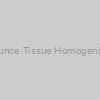 Dounce Tissue Homogenizer |
|
1998-1 |
Biovision |
each |
EUR 470.4 |
 Neuroblastoma Tissue block |
|
103 |
BioCoreUSA |
1 unit |
EUR 425 |
) Lung Tissue Slide (Tumor) |
|
10-102-10um |
ProSci |
10 um |
EUR 241.8 |
) Lung Tissue Slide (Tumor) |
|
10-102-4um |
ProSci |
4 um |
EUR 216.6 |
 Amplite® Total Sulfide Quantification Kit |
|
21300-100Tests |
AAT Bioquest |
100 Tests |
EUR 318 |
|
|
|
Description: Hydrogen sulfide is not usually a health risk at concentrations present in household water. |
) Lung Tissue Slide (Normal) |
|
10-101-10um |
ProSci |
10 um |
EUR 241.8 |
) Lung Tissue Slide (Normal) |
|
10-101-4um |
ProSci |
4 um |
EUR 216.6 |
) Brain Tissue Slide (Tumor) |
|
10-302-10um |
ProSci |
10 um |
EUR 241.8 |
) Brain Tissue Slide (Tumor) |
|
10-302-4um |
ProSci |
4 um |
EUR 216.6 |
) Skin Tissue Slide (Normal) |
|
12-701-10um |
ProSci |
10 um |
EUR 241.8 |
) Skin Tissue Slide (Normal) |
|
12-701-4um |
ProSci |
4 um |
EUR 216.6 |
) Skin Tissue Slide (Benign) |
|
12-702-10um |
ProSci |
10 um |
EUR 241.8 |
) Skin Tissue Slide (Benign) |
|
12-702-4um |
ProSci |
4 um |
EUR 216.6 |
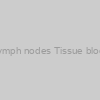 Lymph nodes Tissue block |
|
14 |
BioCoreUSA |
1 unit |
EUR 475 |
) Lung Tissue Lysate (Tumor) |
|
1702-01 |
ProSci |
0.1 mg |
EUR 336.3 |
|
Description: Lung tumor tissue lysate was prepared by homogenization in modified RIPA buffer (150 mM sodium chloride, 50 mM Tris-HCl, pH 7.4, 1 mM ethylenediaminetetraacetic acid, 1 mM phenylmethylsulfonyl fluoride, 1% Triton X-100, 1% sodium deoxycholic acid, 0.1% sodium dodecylsulfate, 5 μg/ml of aprotinin, 5 μg/ml of leupeptin. Tissue and cell debris was removed by centrifugation. Protein concentration was determined with Bio-Rad protein assay. The product was boiled for 5 min in 1 x SDS sample buffer (50 mM Tris-HCl pH 6.8, 12.5% glycerol, 1% sodium dodecylsulfate, 0.01% bromophenol blue) containing 5% β-mercaptoethanol. |
) Lung Tissue Lysate (Tumor) |
|
1702-02 |
ProSci |
0.1 mg |
EUR 336.3 |
|
Description: Lung tumor tissue lysate was prepared by homogenization in modified RIPA buffer (150 mM sodium chloride, 50 mM Tris-HCl, pH 7.4, 1 mM ethylenediaminetetraacetic acid, 1 mM phenylmethylsulfonyl fluoride, 1% Triton X-100, 1% sodium deoxycholic acid, 0.1% sodium dodecylsulfate, 5 μg/ml of aprotinin, 5 μg/ml of leupeptin. Tissue and cell debris was removed by centrifugation. Protein concentration was determined with Bio-Rad protein assay. The product was boiled for 5 min in 1 x SDS sample buffer (50 mM Tris-HCl pH 6.8, 12.5% glycerol, 1% sodium dodecylsulfate, 0.01% bromophenol blue) containing 5% β-mercaptoethanol. |
) Lung Tissue Lysate (Tumor) |
|
1702-03 |
ProSci |
0.1 mg |
EUR 336.3 |
|
Description: Lung tumor tissue lysate was prepared by homogenization in modified RIPA buffer (150 mM sodium chloride, 50 mM Tris-HCl, pH 7.4, 1 mM ethylenediaminetetraacetic acid, 1 mM phenylmethylsulfonyl fluoride, 1% Triton X-100, 1% sodium deoxycholic acid, 0.1% sodium dodecylsulfate, 5 μg/ml of aprotinin, 5 μg/ml of leupeptin. Tissue and cell debris was removed by centrifugation. Protein concentration was determined with Bio-Rad protein assay. The product was boiled for 5 min in 1 x SDS sample buffer (50 mM Tris-HCl pH 6.8, 12.5% glycerol, 1% sodium dodecylsulfate, 0.01% bromophenol blue) containing 5% β-mercaptoethanol. |
) Lung Tissue Lysate (Tumor) |
|
1702-04 |
ProSci |
0.1 mg |
EUR 336.3 |
|
Description: Lung tumor tissue lysate was prepared by homogenization in modified RIPA buffer (150 mM sodium chloride, 50 mM Tris-HCl, pH 7.4, 1 mM ethylenediaminetetraacetic acid, 1 mM phenylmethylsulfonyl fluoride, 1% Triton X-100, 1% sodium deoxycholic acid, 0.1% sodium dodecylsulfate, 5 μg/ml of aprotinin, 5 μg/ml of leupeptin. Tissue and cell debris was removed by centrifugation. Protein concentration was determined with Bio-Rad protein assay. The product was boiled for 5 min in 1 x SDS sample buffer (50 mM Tris-HCl pH 6.8, 12.5% glycerol, 1% sodium dodecylsulfate, 0.01% bromophenol blue) containing 5% β-mercaptoethanol. |
) Lung Tissue Lysate (Tumor) |
|
1703-01 |
ProSci |
0.1 mg |
EUR 336.3 |
|
Description: Lung tumor tissue lysate was prepared by homogenization in modified RIPA buffer (150 mM sodium chloride, 50 mM Tris-HCl, pH 7.4, 1 mM ethylenediaminetetraacetic acid, 1 mM phenylmethylsulfonyl fluoride, 1% Triton X-100, 1% sodium deoxycholic acid, 0.1% sodium dodecylsulfate, 5 μg/ml of aprotinin, 5 μg/ml of leupeptin. Tissue and cell debris was removed by centrifugation. Protein concentration was determined with Bio-Rad protein assay. The product was boiled for 5 min in 1 x SDS sample buffer (50 mM Tris-HCl pH 6.8, 12.5% glycerol, 1% sodium dodecylsulfate, 0.01% bromophenol blue) containing 5% β-mercaptoethanol. |
) Lung Tissue Lysate (Tumor) |
|
1703-02 |
ProSci |
0.1 mg |
EUR 336.3 |
|
Description: Lung tumor tissue lysate was prepared by homogenization in modified RIPA buffer (150 mM sodium chloride, 50 mM Tris-HCl, pH 7.4, 1 mM ethylenediaminetetraacetic acid, 1 mM phenylmethylsulfonyl fluoride, 1% Triton X-100, 1% sodium deoxycholic acid, 0.1% sodium dodecylsulfate, 5 μg/ml of aprotinin, 5 μg/ml of leupeptin. Tissue and cell debris was removed by centrifugation. Protein concentration was determined with Bio-Rad protein assay. The product was boiled for 5 min in 1 x SDS sample buffer (50 mM Tris-HCl pH 6.8, 12.5% glycerol, 1% sodium dodecylsulfate, 0.01% bromophenol blue) containing 5% β-mercaptoethanol. |
) Lung Tissue Lysate (Tumor) |
|
1703-03 |
ProSci |
0.1 mg |
EUR 336.3 |
|
Description: Lung tumor tissue lysate was prepared by homogenization in modified RIPA buffer (150 mM sodium chloride, 50 mM Tris-HCl, pH 7.4, 1 mM ethylenediaminetetraacetic acid, 1 mM phenylmethylsulfonyl fluoride, 1% Triton X-100, 1% sodium deoxycholic acid, 0.1% sodium dodecylsulfate, 5 μg/ml of aprotinin, 5 μg/ml of leupeptin. Tissue and cell debris was removed by centrifugation. Protein concentration was determined with Bio-Rad protein assay. The product was boiled for 5 min in 1 x SDS sample buffer (50 mM Tris-HCl pH 6.8, 12.5% glycerol, 1% sodium dodecylsulfate, 0.01% bromophenol blue) containing 5% β-mercaptoethanol. |
) Lung Tissue Lysate (Tumor) |
|
1703-04 |
ProSci |
0.1 mg |
EUR 336.3 |
|
Description: Lung tumor tissue lysate was prepared by homogenization in modified RIPA buffer (150 mM sodium chloride, 50 mM Tris-HCl, pH 7.4, 1 mM ethylenediaminetetraacetic acid, 1 mM phenylmethylsulfonyl fluoride, 1% Triton X-100, 1% sodium deoxycholic acid, 0.1% sodium dodecylsulfate, 5 μg/ml of aprotinin, 5 μg/ml of leupeptin. Tissue and cell debris was removed by centrifugation. Protein concentration was determined with Bio-Rad protein assay. The product was boiled for 5 min in 1 x SDS sample buffer (50 mM Tris-HCl pH 6.8, 12.5% glycerol, 1% sodium dodecylsulfate, 0.01% bromophenol blue) containing 5% β-mercaptoethanol. |
) Lung Tissue Lysate (Tumor) |
|
1703-05 |
ProSci |
0.1 mg |
EUR 336.3 |
|
Description: Lung tumor tissue lysate was prepared by homogenization in modified RIPA buffer (150 mM sodium chloride, 50 mM Tris-HCl, pH 7.4, 1 mM ethylenediaminetetraacetic acid, 1 mM phenylmethylsulfonyl fluoride, 1% Triton X-100, 1% sodium deoxycholic acid, 0.1% sodium dodecylsulfate, 5 μg/ml of aprotinin, 5 μg/ml of leupeptin. Tissue and cell debris was removed by centrifugation. Protein concentration was determined with Bio-Rad protein assay. The product was boiled for 5 min in 1 x SDS sample buffer (50 mM Tris-HCl pH 6.8, 12.5% glycerol, 1% sodium dodecylsulfate, 0.01% bromophenol blue) containing 5% β-mercaptoethanol. |
) Lung Tissue Lysate (Tumor) |
|
1703-06 |
ProSci |
0.1 mg |
EUR 336.3 |
|
Description: Lung tumor tissue lysate was prepared by homogenization in modified RIPA buffer (150 mM sodium chloride, 50 mM Tris-HCl, pH 7.4, 1 mM ethylenediaminetetraacetic acid, 1 mM phenylmethylsulfonyl fluoride, 1% Triton X-100, 1% sodium deoxycholic acid, 0.1% sodium dodecylsulfate, 5 μg/ml of aprotinin, 5 μg/ml of leupeptin. Tissue and cell debris was removed by centrifugation. Protein concentration was determined with Bio-Rad protein assay. The product was boiled for 5 min in 1 x SDS sample buffer (50 mM Tris-HCl pH 6.8, 12.5% glycerol, 1% sodium dodecylsulfate, 0.01% bromophenol blue) containing 5% β-mercaptoethanol. |
) Lung Tissue Lysate (Tumor) |
|
1703-07 |
ProSci |
0.1 mg |
EUR 336.3 |
|
Description: Lung tumor tissue lysate was prepared by homogenization in modified RIPA buffer (150 mM sodium chloride, 50 mM Tris-HCl, pH 7.4, 1 mM ethylenediaminetetraacetic acid, 1 mM phenylmethylsulfonyl fluoride, 1% Triton X-100, 1% sodium deoxycholic acid, 0.1% sodium dodecylsulfate, 5 μg/ml of aprotinin, 5 μg/ml of leupeptin. Tissue and cell debris was removed by centrifugation. Protein concentration was determined with Bio-Rad protein assay. The product was boiled for 5 min in 1 x SDS sample buffer (50 mM Tris-HCl pH 6.8, 12.5% glycerol, 1% sodium dodecylsulfate, 0.01% bromophenol blue) containing 5% β-mercaptoethanol. |
) Lung Tissue Lysate (Tumor) |
|
1703-08 |
ProSci |
0.1 mg |
EUR 336.3 |
|
Description: Lung tumor tissue lysate was prepared by homogenization in modified RIPA buffer (150 mM sodium chloride, 50 mM Tris-HCl, pH 7.4, 1 mM ethylenediaminetetraacetic acid, 1 mM phenylmethylsulfonyl fluoride, 1% Triton X-100, 1% sodium deoxycholic acid, 0.1% sodium dodecylsulfate, 5 μg/ml of aprotinin, 5 μg/ml of leupeptin. Tissue and cell debris was removed by centrifugation. Protein concentration was determined with Bio-Rad protein assay. The product was boiled for 5 min in 1 x SDS sample buffer (50 mM Tris-HCl pH 6.8, 12.5% glycerol, 1% sodium dodecylsulfate, 0.01% bromophenol blue) containing 5% β-mercaptoethanol. |
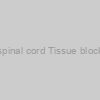 spinal cord Tissue block |
|
22 |
BioCoreUSA |
1 unit |
EUR 635 |
) Liver Tissue Slide (Normal) |
|
10-201-10um |
ProSci |
10 um |
EUR 241.8 |
) Liver Tissue Slide (Normal) |
|
10-201-4um |
ProSci |
4 um |
EUR 216.6 |
) Brain Tissue Slide (Normal) |
|
10-301-10um |
ProSci |
10 um |
EUR 241.8 |
) Brain Tissue Slide (Normal) |
|
10-301-4um |
ProSci |
4 um |
EUR 216.6 |
) Kidney Tissue Slide (Tumor) |
|
10-402-10um |
ProSci |
10 um |
EUR 241.8 |
) Kidney Tissue Slide (Tumor) |
|
10-402-4um |
ProSci |
4 um |
EUR 216.6 |
) Heart Tissue Slide (Normal) |
|
10-501-10um |
ProSci |
10 um |
EUR 241.8 |
) Heart Tissue Slide (Normal) |
|
10-501-4um |
ProSci |
4 um |
EUR 216.6 |
) Ovary Tissue Slide (Normal) |
|
11-201-10um |
ProSci |
10 um |
EUR 241.8 |
) Ovary Tissue Slide (Normal) |
|
11-201-4um |
ProSci |
4 um |
EUR 216.6 |
) Ovary Tissue Slide (Benign) |
|
11-202-10um |
ProSci |
10 um |
EUR 241.8 |
) Ovary Tissue Slide (Benign) |
|
11-202-4um |
ProSci |
4 um |
EUR 216.6 |
) Uvula Tissue Slide (Benign) |
|
12-908-10um |
ProSci |
10 um |
EUR 241.8 |
) Uvula Tissue Slide (Benign) |
|
12-908-4um |
ProSci |
4 um |
EUR 216.6 |
) Colon Tissue Lysate (Tumor) |
|
1716-01 |
ProSci |
0.1 mg |
EUR 336.3 |
|
Description: Colon tumor tissue lysate was prepared by homogenization in modified RIPA buffer (150 mM sodium chloride, 50 mM Tris-HCl, pH 7.4, 1 mM ethylenediaminetetraacetic acid, 1 mM phenylmethylsulfonyl fluoride, 1% Triton X-100, 1% sodium deoxycholic acid, 0.1% sodium dodecylsulfate, 5 μg/ml of aprotinin, 5 μg/ml of leupeptin. Tissue and cell debris was removed by centrifugation. Protein concentration was determined with Bio-Rad protein assay. The product was boiled for 5 min in 1 x SDS sample buffer (50 mM Tris-HCl pH 6.8, 12.5% glycerol, 1% sodium dodecylsulfate, 0.01% bromophenol blue) containing 5% β-mercaptoethanol. |
) Colon Tissue Lysate (Tumor) |
|
1716-02 |
ProSci |
0.1 mg |
EUR 336.3 |
|
Description: Colon tumor tissue lysate was prepared by homogenization in modified RIPA buffer (150 mM sodium chloride, 50 mM Tris-HCl, pH 7.4, 1 mM ethylenediaminetetraacetic acid, 1 mM phenylmethylsulfonyl fluoride, 1% Triton X-100, 1% sodium deoxycholic acid, 0.1% sodium dodecylsulfate, 5 μg/ml of aprotinin, 5 μg/ml of leupeptin. Tissue and cell debris was removed by centrifugation. Protein concentration was determined with Bio-Rad protein assay. The product was boiled for 5 min in 1 x SDS sample buffer (50 mM Tris-HCl pH 6.8, 12.5% glycerol, 1% sodium dodecylsulfate, 0.01% bromophenol blue) containing 5% β-mercaptoethanol. |
) Colon Tissue Lysate (Tumor) |
|
1716-03 |
ProSci |
0.1 mg |
EUR 336.3 |
|
Description: Colon tumor tissue lysate was prepared by homogenization in modified RIPA buffer (150 mM sodium chloride, 50 mM Tris-HCl, pH 7.4, 1 mM ethylenediaminetetraacetic acid, 1 mM phenylmethylsulfonyl fluoride, 1% Triton X-100, 1% sodium deoxycholic acid, 0.1% sodium dodecylsulfate, 5 μg/ml of aprotinin, 5 μg/ml of leupeptin. Tissue and cell debris was removed by centrifugation. Protein concentration was determined with Bio-Rad protein assay. The product was boiled for 5 min in 1 x SDS sample buffer (50 mM Tris-HCl pH 6.8, 12.5% glycerol, 1% sodium dodecylsulfate, 0.01% bromophenol blue) containing 5% β-mercaptoethanol. |
) Colon Tissue Lysate (Tumor) |
|
1716-04 |
ProSci |
0.1 mg |
EUR 336.3 |
|
Description: Colon tumor tissue lysate was prepared by homogenization in modified RIPA buffer (150 mM sodium chloride, 50 mM Tris-HCl, pH 7.4, 1 mM ethylenediaminetetraacetic acid, 1 mM phenylmethylsulfonyl fluoride, 1% Triton X-100, 1% sodium deoxycholic acid, 0.1% sodium dodecylsulfate, 5 μg/ml of aprotinin, 5 μg/ml of leupeptin. Tissue and cell debris was removed by centrifugation. Protein concentration was determined with Bio-Rad protein assay. The product was boiled for 5 min in 1 x SDS sample buffer (50 mM Tris-HCl pH 6.8, 12.5% glycerol, 1% sodium dodecylsulfate, 0.01% bromophenol blue) containing 5% β-mercaptoethanol. |
) Liver Tissue Lysate (Tumor) |
|
1719-01 |
ProSci |
0.1 mg |
EUR 336.3 |
|
Description: Liver tumor tissue lysate was prepared by homogenization in modified RIPA buffer (150 mM sodium chloride, 50 mM Tris-HCl, pH 7.4, 1 mM ethylenediaminetetraacetic acid, 1 mM phenylmethylsulfonyl fluoride, 1% Triton X-100, 1% sodium deoxycholic acid, 0.1% sodium dodecylsulfate, 5 μg/ml of aprotinin, 5 μg/ml of leupeptin. Tissue and cell debris was removed by centrifugation. Protein concentration was determined with Bio-Rad protein assay. The product was boiled for 5 min in 1 x SDS sample buffer (50 mM Tris-HCl pH 6.8, 12.5% glycerol, 1% sodium dodecylsulfate, 0.01% bromophenol blue) containing 5% β-mercaptoethanol. |
) Liver Tissue Lysate (Tumor) |
|
1719-02 |
ProSci |
0.1 mg |
EUR 336.3 |
|
Description: Liver tumor tissue lysate was prepared by homogenization in modified RIPA buffer (150 mM sodium chloride, 50 mM Tris-HCl, pH 7.4, 1 mM ethylenediaminetetraacetic acid, 1 mM phenylmethylsulfonyl fluoride, 1% Triton X-100, 1% sodium deoxycholic acid, 0.1% sodium dodecylsulfate, 5 μg/ml of aprotinin, 5 μg/ml of leupeptin. Tissue and cell debris was removed by centrifugation. Protein concentration was determined with Bio-Rad protein assay. The product was boiled for 5 min in 1 x SDS sample buffer (50 mM Tris-HCl pH 6.8, 12.5% glycerol, 1% sodium dodecylsulfate, 0.01% bromophenol blue) containing 5% β-mercaptoethanol. |
) Liver Tissue Lysate (Tumor) |
|
1720-01 |
ProSci |
0.1 mg |
EUR 336.3 |
|
Description: Liver tumor tissue lysate was prepared by homogenization in modified RIPA buffer (150 mM sodium chloride, 50 mM Tris-HCl, pH 7.4, 1 mM ethylenediaminetetraacetic acid, 1 mM phenylmethylsulfonyl fluoride, 1% Triton X-100, 1% sodium deoxycholic acid, 0.1% sodium dodecylsulfate, 5 μg/ml of aprotinin, 5 μg/ml of leupeptin. Tissue and cell debris was removed by centrifugation. Protein concentration was determined with Bio-Rad protein assay. The product was boiled for 5 min in 1 x SDS sample buffer (50 mM Tris-HCl pH 6.8, 12.5% glycerol, 1% sodium dodecylsulfate, 0.01% bromophenol blue) containing 5% β-mercaptoethanol. |
) Brain Tissue Lysate (Tumor) |
|
1732-01 |
ProSci |
0.1 mg |
EUR 336.3 |
|
Description: Brain tumor lysate was prepared by homogenization in lysis buffer (10 mM HEPES pH7.9, 1.5 mM MgCl2, 10 mM KCl, 1 mM ethylenediaminetetraacetic acid, 10% glycerol, 1% NP-40, and a cocktail of protease inhibitors). Tissue and cell debris was removed by centrifugation. The product was boiled for 5 min in 1 x SDS sample buffer (50 mM Tris-HCl pH 6.8, 12.5% glycerol, 1% sodium dodecylsulfate, 0.01% bromophenol blue) containing 5% β-mercaptoethanol. |
) Brain Tissue Lysate (Tumor) |
|
1732-02 |
ProSci |
0.1 mg |
EUR 336.3 |
|
Description: Brain tumor lysate was prepared by homogenization in lysis buffer (10 mM HEPES pH7.9, 1.5 mM MgCl2, 10 mM KCl, 1 mM ethylenediaminetetraacetic acid, 10% glycerol, 1% NP-40, and a cocktail of protease inhibitors). Tissue and cell debris was removed by centrifugation. The product was boiled for 5 min in 1 x SDS sample buffer (50 mM Tris-HCl pH 6.8, 12.5% glycerol, 1% sodium dodecylsulfate, 0.01% bromophenol blue) containing 5% β-mercaptoethanol. |
) Brain Tissue Lysate (Tumor) |
|
1732-03 |
ProSci |
0.1 mg |
EUR 336.3 |
|
Description: Brain tumor lysate was prepared by homogenization in lysis buffer (10 mM HEPES pH7.9, 1.5 mM MgCl2, 10 mM KCl, 1 mM ethylenediaminetetraacetic acid, 10% glycerol, 1% NP-40, and a cocktail of protease inhibitors). Tissue and cell debris was removed by centrifugation. The product was boiled for 5 min in 1 x SDS sample buffer (50 mM Tris-HCl pH 6.8, 12.5% glycerol, 1% sodium dodecylsulfate, 0.01% bromophenol blue) containing 5% β-mercaptoethanol. |
) Lung Tissue Lysate (Normal) |
|
1701-01 |
ProSci |
0.1 mg |
EUR 260.7 |
|
Description: Lung tissue lysate was prepared by homogenization in modified RIPA buffer (150 mM sodium chloride, 50 mM Tris-HCl, pH 7.4, 1 mM ethylenediaminetetraacetic acid, 1 mM phenylmethylsulfonyl fluoride, 1% Triton X-100, 1% sodium deoxycholic acid, 0.1% sodium dodecylsulfate, 5 μg/ml of aprotinin, 5 μg/ml of leupeptin. Tissue and cell debris was removed by centrifugation. Protein concentration was determined with Bio-Rad protein assay. The product was boiled for 5 min in 1 x SDS sample buffer (50 mM Tris-HCl pH 6.8, 12.5% glycerol, 1% sodium dodecylsulfate, 0.01% bromophenol blue) containing 5% β-mercaptoethanol. |
) Lung Tissue Lysate (Normal) |
|
1701-02 |
ProSci |
0.1 mg |
EUR 260.7 |
|
Description: Lung tissue lysate was prepared by homogenization in modified RIPA buffer (150 mM sodium chloride, 50 mM Tris-HCl, pH 7.4, 1 mM ethylenediaminetetraacetic acid, 1 mM phenylmethylsulfonyl fluoride, 1% Triton X-100, 1% sodium deoxycholic acid, 0.1% sodium dodecylsulfate, 5 μg/ml of aprotinin, 5 μg/ml of leupeptin. Tissue and cell debris was removed by centrifugation. Protein concentration was determined with Bio-Rad protein assay. The product was boiled for 5 min in 1 x SDS sample buffer (50 mM Tris-HCl pH 6.8, 12.5% glycerol, 1% sodium dodecylsulfate, 0.01% bromophenol blue) containing 5% β-mercaptoethanol. |
) Lung Tissue Lysate (Normal) |
|
1701-03 |
ProSci |
0.1 mg |
EUR 260.7 |
|
Description: Lung tissue lysate was prepared by homogenization in modified RIPA buffer (150 mM sodium chloride, 50 mM Tris-HCl, pH 7.4, 1 mM ethylenediaminetetraacetic acid, 1 mM phenylmethylsulfonyl fluoride, 1% Triton X-100, 1% sodium deoxycholic acid, 0.1% sodium dodecylsulfate, 5 μg/ml of aprotinin, 5 μg/ml of leupeptin. Tissue and cell debris was removed by centrifugation. Protein concentration was determined with Bio-Rad protein assay. The product was boiled for 5 min in 1 x SDS sample buffer (50 mM Tris-HCl pH 6.8, 12.5% glycerol, 1% sodium dodecylsulfate, 0.01% bromophenol blue) containing 5% β-mercaptoethanol. |
We additionally discover that using hybrid DNA-RNA guides will increase the speed of response, enabling our take a look at to be accomplished inside 30 minutes. Using scientific samples from 72 sufferers with COVID-19 an infection and 57 wholesome people, we reveal that our take a look at reveals a specificity and constructive predictive worth of 100% with a sensitivity of 50 and 1000 copies per response (or 2 and 40 copies per microliter) for purified RNA samples and unpurified NP specimens respectively.
![Novel amino substituted tetracyclic imidazo[4,5-b]pyridine derivatives: Design, synthesis, antiproliferative activity and DNA/RNA binding study](http://www.gehealthcarecamdengroup.com/wp-content/uploads/2021/04/IMG-20201217-WA0100-484x1024.jpg)
![Novel amino substituted tetracyclic imidazo[4,5-b]pyridine derivatives: Design, synthesis, antiproliferative activity and DNA/RNA binding study](http://www.gehealthcarecamdengroup.com/wp-content/uploads/2021/04/IMG-20201217-WA0100.jpg)